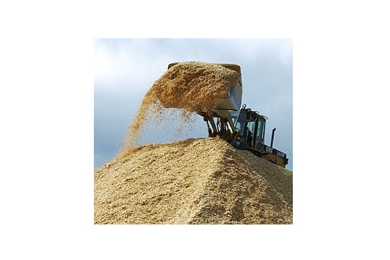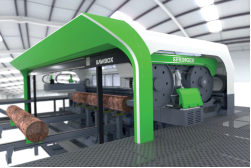Establishing wood processors close to forestry allows wood processing and forestry residues to be used as an energy source, with any surplus able to be used by other nearby industries. Other primary processing (such dairy and meat processing) could also benefit from this strategy, and there is potential for a shared energy plant to service multiple factories.
This strategy of clustering industries around an energy source and utilising production waste streams is called industrial symbiosis. Applied in regional New Zealand it could create jobs, increase GDP and reduce greenhouse gas emissions.
Researchers have mapped New Zealand’s forestry, energy resources and fossil energy-using industries to identify regions where clusters of wood processing operations could be co-located with meat and dairy processing, for example. Gisborne, Hawkes Bay, Northland and Southland/Clutha are well suited to industrial symbiosis. Each is forecast to have a long-term supply of surplus logs, forestry and other woody waste to contribute.
If each of these clusters were established, the increase in onshore processing would provide an additional ~1000 jobs in each region, add a total of NZ$2 billion to New Zealand’s bottom line and reduce carbon dioxide emissions by 67,000 tonnes a year by replacing fossil fuels with biomass.
Data produced by this project has now been supplied to the Ministry of Business, Innovation and Employment and the Energy Efficiency and Conservation Authority for their continued analysis. New opportunities for wood processing clusters in these regions were identified using the WoodScape model and predictions of future log availability to calculate the best return on capital investment.
Gisborne, Hawkes Bay, Northland and Southland/Clutha regions have unique future wood processing options and the flow on opportunities to co-locate with other industries differ between regions.
Industrial symbiosis in Gisborne would be focused on standalone wood-processing powered by forestry and processing residues. In Ngāwha, Northland, the availability of geothermal energy frees up residues for secondary manufacturing. In Hawkes Bay and Southland, residues from wood processing clusters could be used to replace coal or gas used by other nearby industries.
Further opportunities for full industrial symbiosis have been identified around the Marsden Point oil refinery and Golden Bay Cement/Portland Cement in Northland. There is also potential to fuel industrial heat with biomass in the central North Island, Blenheim, Tasman/Nelson, Hokitika, Greymouth and Canterbury.
The new wood processes with the highest return on capital investment include sawmills, Optimised Engineering Lumber (OEL™), plywood, oriented strand board, cross-laminated timber and remanufactured timber. Where geothermal heat is available the range of options expands and includes bio-chemical recovery and manufacture of solid biofuels from wood processing residues that might otherwise have been used to provide process or drying heat.







